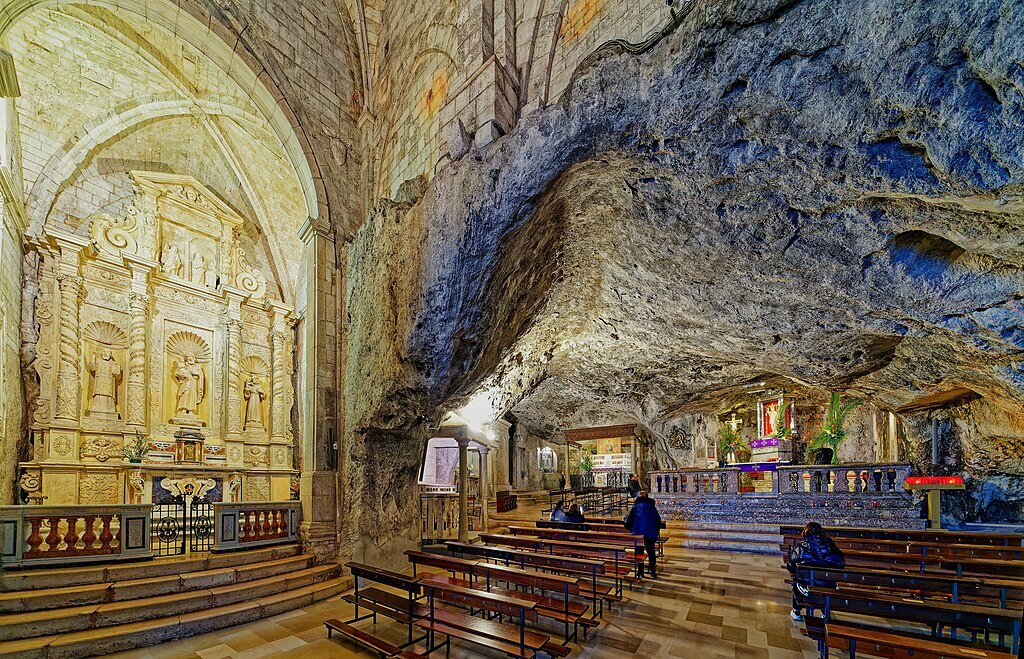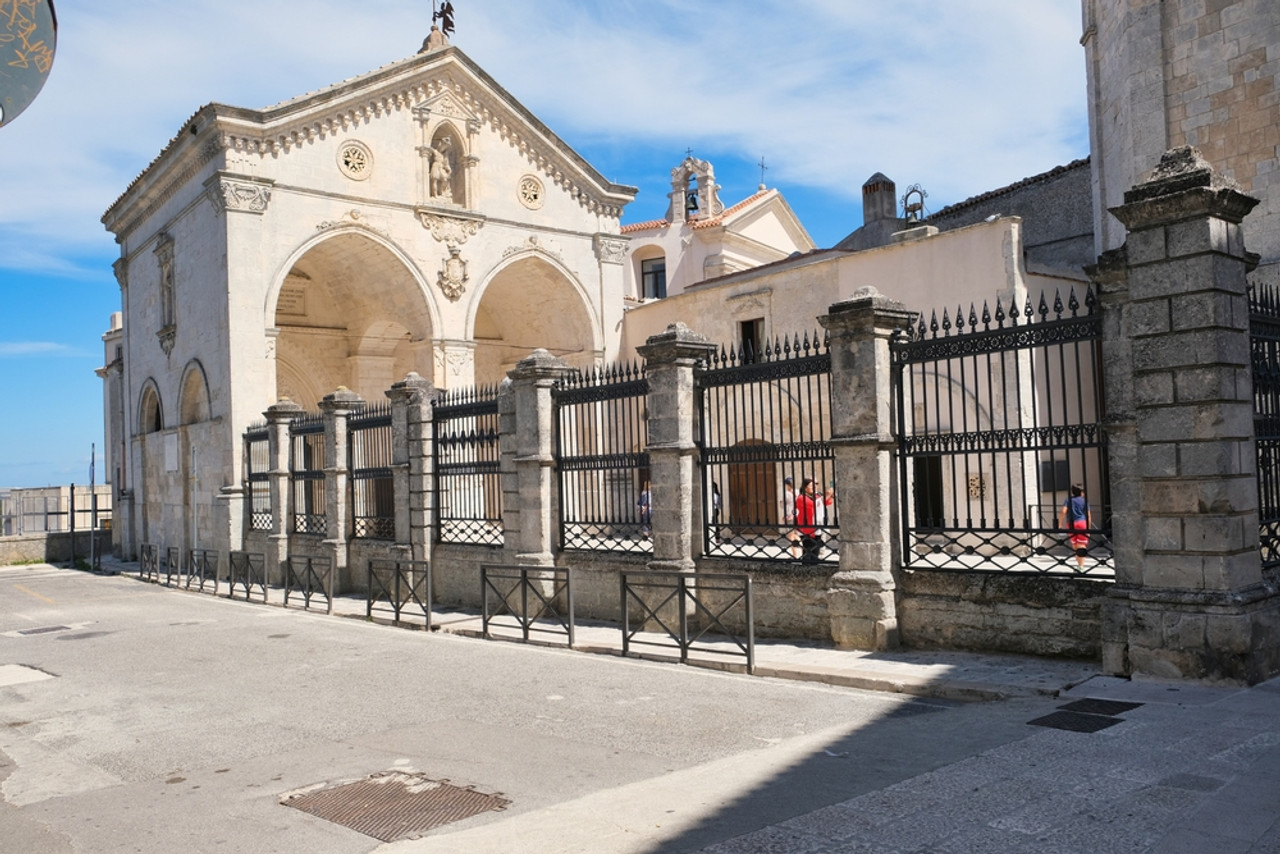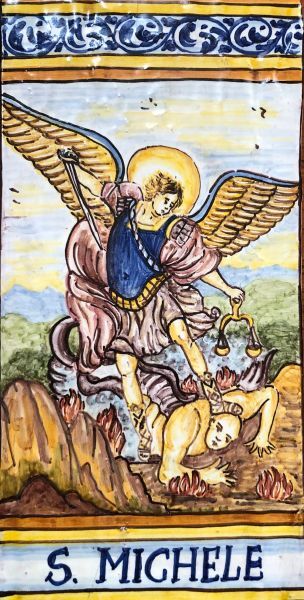The Cave of Saint Michael in Monte Sant'Angelo
The Cave of Saint Michael in Monte Sant'Angelo
A short drive (15 miles) from Padre Pio's Shrine in San Giovanni Rotondo lies a cave where the Archangel Michael was said to appear. Located in the town of Monte Sant'Angelo, The Cave of Saint Michael, also known as the Grotto Church of Saint Michael or Santuario Grotta di San Michele, is one of the holiest places in Italy and perhaps throughout the world. This important Christian pilgrimage site has been visited by countless saints and popes including: St. Bernard of Clarvaux, Blessed Mother Teresa of Calcutta, St. Padre Pio of Pietrelcina, Pope John Paul II, Pope Benedict XVI, the current Pope Leo XIV and even St. Francis of Assisi who upon visiting the cave considered it to be so holy, he would not enter.
Saint Michael the Archangel, whose name means “Who is like God” is recognized as the chief archangel. He is the warrior of God in Christianity, Judaism and Islam. He is the guardian prince of Israel and is responsible for the care of God’s chosen people, the Jews.
This natural limestone cave was probably inhabited since Paleolithic times and once a place of pagan worship for the Greeks & Romans. Tradition states that the Archangel Michael first appeared in the cave in 490, when Elvio Emanuele, a wealthy gentleman from the village lost his best bull. He went in search of the bull and found him kneeling inside a deserted, inaccessible cave. Realizing there was no way he could extract the bull himself, he shot an arrow at the bull, but to his amazement the arrow turned around and struck him instead. Stunned by this apparently supernatural event, the man immediately went to his local bishop Lorenzo Maiorano, Bishop of Siponto and recanted to him what had happened.
The Bishop uncertain what to make of these events and to access whether this was an event of divine origin ordered three days of fasting and prayer. As the third day drew to a close, St. Michael the Archangel appeared to the Bishop and directed him to dedicate this cave as a place of Christian worship.

St. Michael said to the Bishop:
“Know ye that this man is so hurt by my will. I am Michael the archangel, which will that this place be worshipped in earth, and will have it surely kept. And therefore I have proved that I am keeper of this place by the demonstrance and showing of this thing.”
After this apparition, the people and the bishop made a procession to pray at entrance of the cave though he did not enter the cave nor claim it for Saint Michael, since the place had previously been considered a sacred by pagans. Two years later, in 492, a city in the Bishop’s diocese was attacked by pagan forces. Saint Michael again appeared to the Bishop and promised he would assist the Bishop in defeating the enemy, if the townspeople would only fight. During the battle, an intense storm broke out which terrified the barbarians who fled.
Again, the bishop led a procession to the cave to thank St. Michael, but he still was fearful to enter this formerly pagan site. He wished to honor St. Michael’s request and build a church, but he was unsure what to do. He consulted with the Pope, Gelasius I, and the Holy Father told him to enter the cave and to consecrate it a church.
One the day of consecration, Saint Michael again appeared to the bishop.
Saint Michael said: “I am Michael the Archangel and am always in the presence of God. I chose the cave as sacred to me. There will be no more shedding of bull’s blood. Where the rocks open widely, the sins of men may be pardoned. What is asked here in prayer will be granted. Therefore, go up to the mountain cave and dedicate it to the Christian God.”
St. Michael ordered the Bishop to enter the cave, telling him that it was not necessary for him to consecrate the cave since he, Saint Michael, had already done so. This sacred site is the only house of worship in the Catholic Church that has not been consecrated by man.
The church was dedicated to Saint Michael on September 29, 493. In due time, the church earned the distinction of “the Celestial Basilica.”
Saint Michael’s Cave is one of the seven sacred sites along an imaginary line stretching from Ireland to Israel, known as “The Sword of Saint Michael”, a mysterious, perfectly aligned, geographical straight line linking seven shrines dedicated to The Archangel from Ireland to Israel. According to legend, The Sacred Line of Saint Michael the Archangel represents the blow the Saint inflicted on the Devil, sending him to hell.
- Stella Maris Monastery (Haifa, Israel)
- Saint Michael of Panormitis (Symi, Greece)
- Sanctuary of Monte Sant'Angelo (Apulia, Italy)
- Sacra di San Michele (Piedmont, Italy)
- Mont-Saint-Michel (Normandy, France)
- St. Michael's Mount (Cornwall)
- Skellig Michael (County Kerry, Ireland)
Saint Michael The Archangel
Italian Ceramic Tile
Prayer to Saint Michael
Saint Michael the Archangel, defend us in battle.
Be our protection against the wickedness and snares of the devil;
May God rebuke him, we humbly pray;
And do thou, O Prince of the Heavenly Host, by the power of God, cast into hell Satan and all evil spirits who prowl about the world, seeking the ruin of souls.
Amen.








